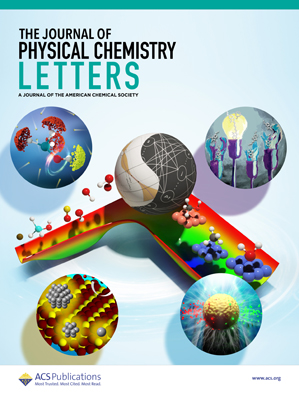超冷K + KRb→Rb + K2化学反应中的非绝热驱动量子干涉效应
IF 4.6
2区 化学
Q2 CHEMISTRY, PHYSICAL
引用次数: 0
摘要
K + KRb→Rb + K2化学反应是十多年前首次报道的温度低于1 μK的超冷原子-硅藻化学反应的实验结果。反应是通过与激发态耦合发生的,即使在超冷极限下也能达到激发态。先前的一项量子动力学研究,排除了非绝热效应,报告了一个比实验值低35%的速率系数。在这里,我们报告了该反应的第一个非绝热量子动力学研究,并获得了与实验更吻合的速率系数。我们的研究结果表明,与激发态耦合介导的短程动力学引入了量子干涉效应,影响了态与态之间的速率系数和总体反应速率。本文章由计算机程序翻译,如有差异,请以英文原文为准。
Nonadiabatically Driven Quantum Interference Effects in the Ultracold K + KRb → Rb + K2 Chemical Reaction
The K + KRb → Rb + K2 chemical reaction is the first ultracold atom–diatom chemical reaction for which experimental results have been reported for temperatures below 1 μK more than a decade ago. The reaction occurs through coupling with an excited electronic state that is accessible even in the ultracold limit. A previous quantum dynamics study, excluding nonadiabatic effects, has reported a rate coefficient that is about 35% below the experimental value. Here, we report the first nonadiabatic quantum dynamics study of this reaction and obtain rate coefficients in better agreement with experiments. Our results show that short-range dynamics mediated by coupling with the excited electronic state introduces quantum interference effects that influence both the state-to-state rate coefficients and the overall reaction rates.
求助全文
通过发布文献求助,成功后即可免费获取论文全文。
去求助
来源期刊

The Journal of Physical Chemistry Letters
CHEMISTRY, PHYSICAL-NANOSCIENCE & NANOTECHNOLOGY
CiteScore
9.60
自引率
7.00%
发文量
1519
审稿时长
1.6 months
期刊介绍:
The Journal of Physical Chemistry (JPC) Letters is devoted to reporting new and original experimental and theoretical basic research of interest to physical chemists, biophysical chemists, chemical physicists, physicists, material scientists, and engineers. An important criterion for acceptance is that the paper reports a significant scientific advance and/or physical insight such that rapid publication is essential. Two issues of JPC Letters are published each month.
 求助内容:
求助内容: 应助结果提醒方式:
应助结果提醒方式:


